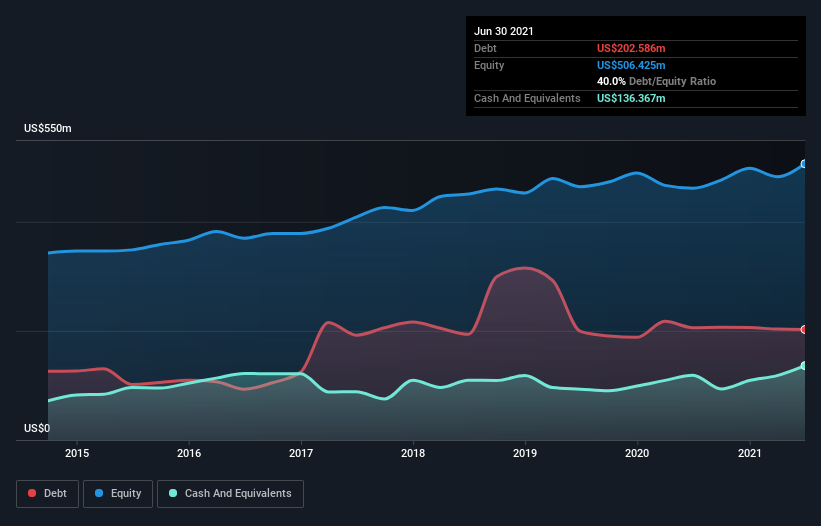Howard Marks put it nicely when he said that, rather than worrying about share price volatility, ‘The possibility of permanent loss is the risk I worry about… and every practical investor I know worries about.’ When we think about how risky a company is, we always like to look at its use of debt, since debt overload can lead to ruin. As with many other companies Standex International Corporation (NYSE:SXI) makes use of debt. But is this debt a concern to shareholders?
What Risk Does Debt Bring?
Debt and other liabilities become risky for a business when it cannot easily fulfill those obligations, either with free cash flow or by raising capital at an attractive price. If things get really bad, the lenders can take control of the business. While that is not too common, we often do see indebted companies permanently diluting shareholders because lenders force them to raise capital at a distressed price. Of course, plenty of companies use debt to fund growth, without any negative consequences. The first step when considering a company’s debt levels is to consider its cash and debt together.
How Much Debt Does Standex International Carry?
The chart below, which you can click on for greater detail, shows that Standex International had US$202.6m in debt in June 2021; about the same as the year before. However, it also had US$136.4m in cash, and so its net debt is US$66.2m.

How Healthy Is Standex International’s Balance Sheet?
We can see from the most recent balance sheet that Standex International had liabilities of US$143.7m falling due within a year, and liabilities of US$312.1m due beyond that. On the other hand, it had cash of US$136.4m and US$107.6m worth of receivables due within a year. So it has liabilities totalling US$211.8m more than its cash and near-term receivables, combined.
Given Standex International has a market capitalization of US$1.21b, it’s hard to believe these liabilities pose much threat. However, we do think it is worth keeping an eye on its balance sheet strength, as it may change over time.
In order to size up a company’s debt relative to its earnings, we calculate its net debt divided by its earnings before interest, tax, depreciation, and amortization (EBITDA) and its earnings before interest and tax (EBIT) divided by its interest expense (its interest cover). The advantage of this approach is that we take into account both the absolute quantum of debt (with net debt to EBITDA) and the actual interest expenses associated with that debt (with its interest cover ratio).
Standex International’s net debt is only 0.59 times its EBITDA. And its EBIT easily covers its interest expense, being 13.1 times the size. So we’re pretty relaxed about its super-conservative use of debt. Also good is that Standex International grew its EBIT at 17% over the last year, further increasing its ability to manage debt. When analysing debt levels, the balance sheet is the obvious place to start. But it is future earnings, more than anything, that will determine Standex International’s ability to maintain a healthy balance sheet going forward. So if you’re focused on the future you can check out this free report showing analyst profit forecasts.
Finally, a company can only pay off debt with cold hard cash, not accounting profits. So the logical step is to look at the proportion of that EBIT that is matched by actual free cash flow. During the last three years, Standex International produced sturdy free cash flow equating to 56% of its EBIT, about what we’d expect. This free cash flow puts the company in a good position to pay down debt, when appropriate.
Our View
Standex International’s interest cover suggests it can handle its debt as easily as Cristiano Ronaldo could score a goal against an under 14’s goalkeeper. And that’s just the beginning of the good news since its net debt to EBITDA is also very heartening. Zooming out, Standex International seems to use debt quite reasonably; and that gets the nod from us. After all, sensible leverage can boost returns on equity.






































